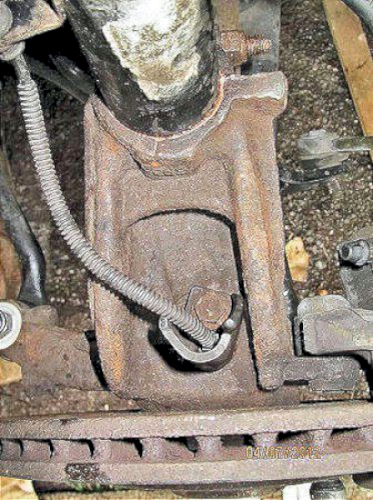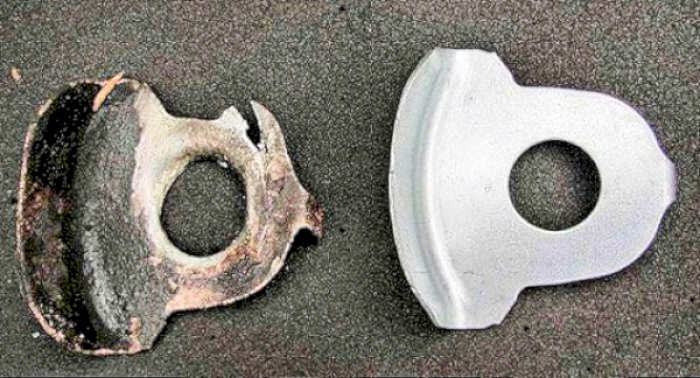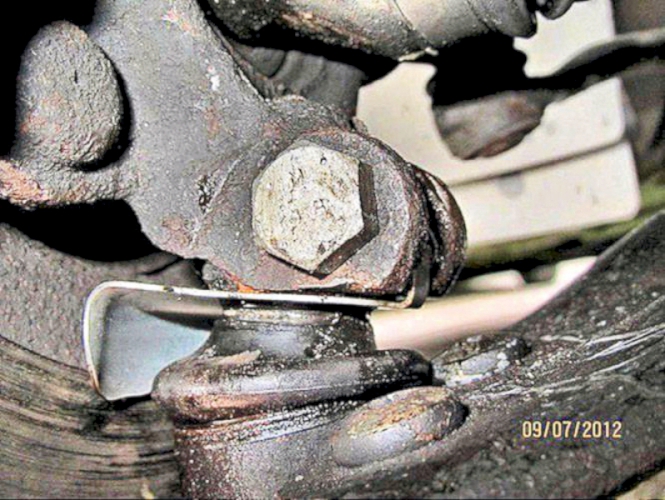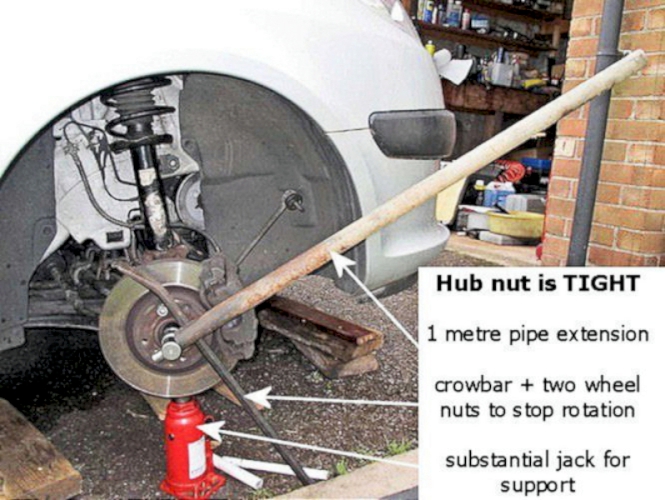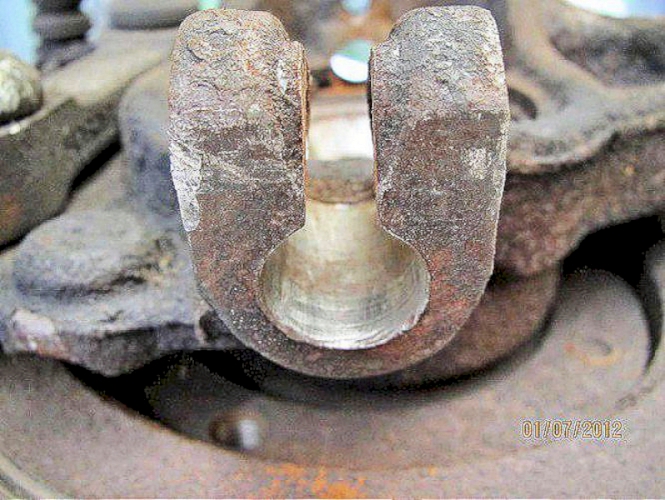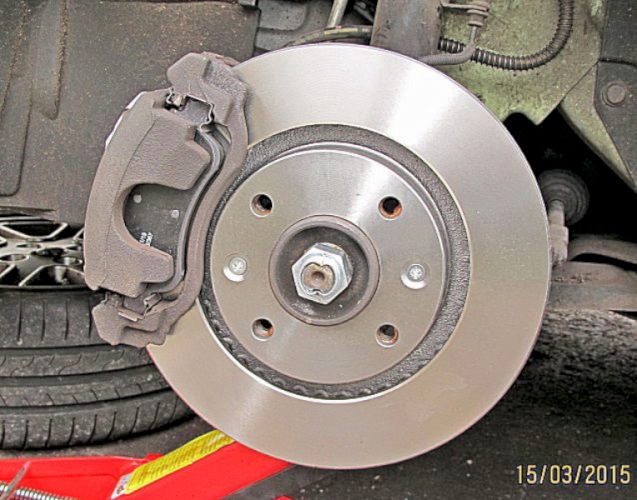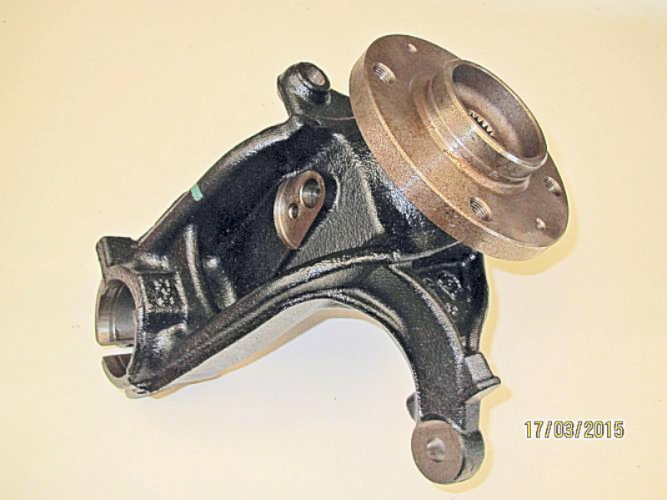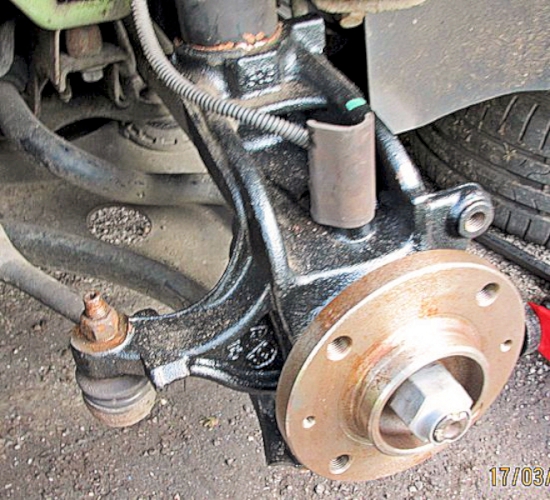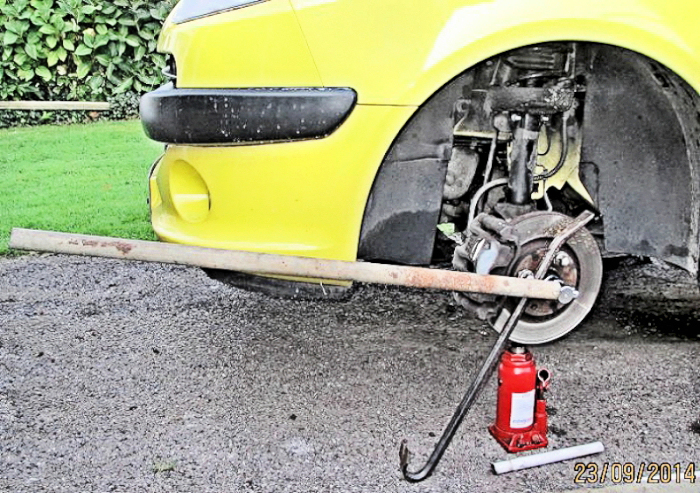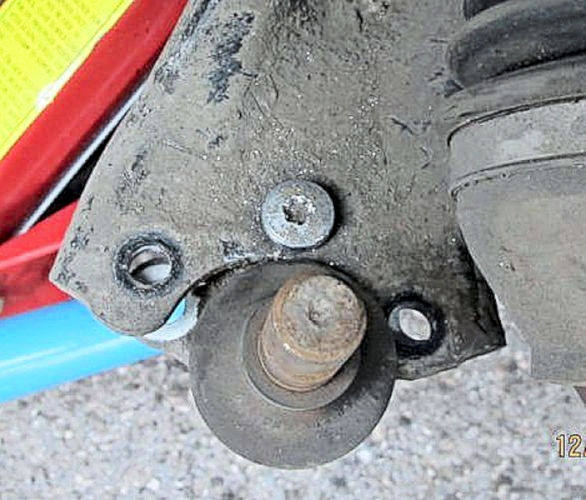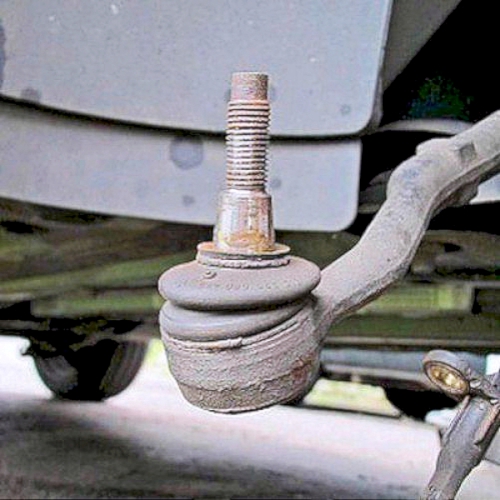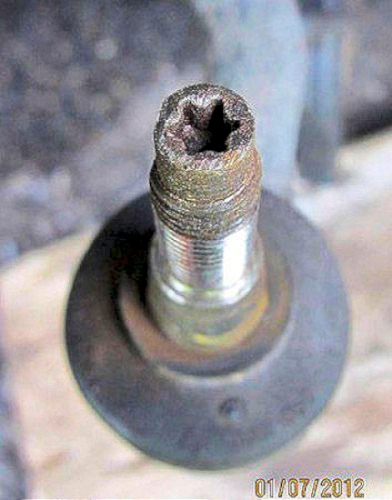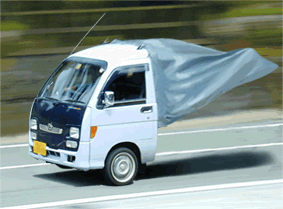
Front Discs and Pads
Changing the brake pads
- Jack up and support the body with an axle stand.
- Remove the road wheel.
- Remove the lower bolt from the calliper and swing the calliper up.
- Replace the old pads, lower the calliper and replace the lower bolt
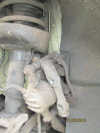
Remove the brake calliper complete and hang it out of the way from one of the spring coils using a made-up wire hook. The torx55 bolts are VERY tight; make sure you have a very strong ½" drive torx socket and extension bar before starting. Access is improved by turning the steering wheel to full lock. Note that all my 1007's are fitted with spring catchers below the lower spring mount.
Remove the brake disc (two countersunk Torx T30 screws). The old disc should knock off quite easily, though occasionally they can rust into position.
Attach the new disc (clean any protective oil residue off first) and secure with the two countersunk screws.
Unhook and refit the calliper in position - make sure the two T55 bolts are secured tightly using a long extension bar.
Remove the lower bolt holding the calliper in position and swing up. Ensure the piston is pushed right back into the cylinder.
Fit the new pads and lower the calliper down over them; refit and tighten the lower bolt
Press the brake pedal to take up any slack
